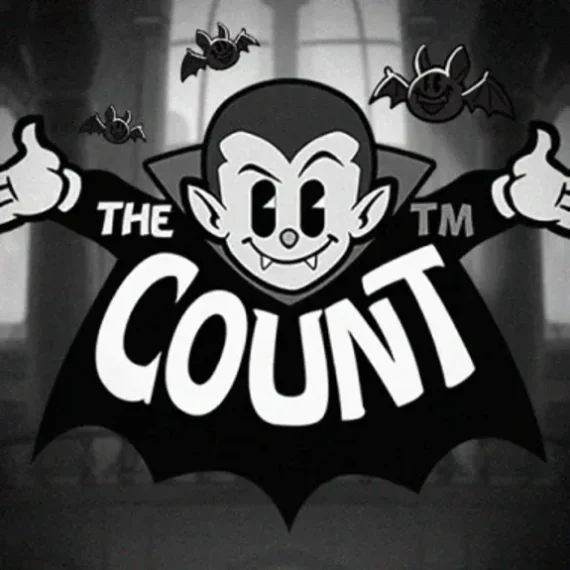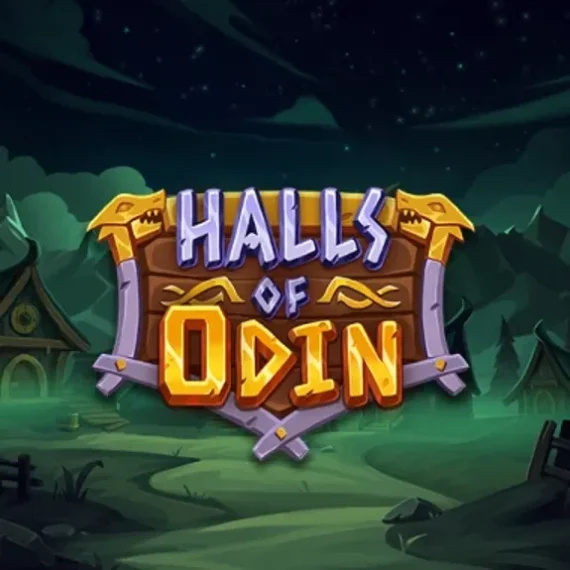Slot Reviews & Casino Bonuses – Crypto Friendly Slots and Casinos
Slotify isn’t here to stream your favorite tunes – it’s here to deliver something even better: nonstop slot action, massive jackpots, and the latest titles from top-tier providers.
We’ve swapped playlists for paylines and rhythms for reels, creating a go-to destination for online casino fans who want real entertainment and real chances to win.
From explosive new releases to iconic classics, Slotify.cc spins louder, hits harder, and always keeps the thrill going. Discover hundreds of top-rated online slots, from high-volatility thrillers to feature-packed bonus games.
At Slotify.cc, we review and showcase the best slot reviews, including the latest casino bonuses and trusted crypto-friendly casinos — all in one place for your convenience.
Whether you’re into free spins, jackpot slots, or low-stake casual play, Slotify helps you find your perfect game and the right place to play it.


Every game and bonus listed here is tested and reviewed. You won’t find shady operators or confusing promotions. Instead, everything is clearly explained and easy to compare.
Games are sorted by payout potential, volatility, and bonus features. This helps you find what you want faster.
If you like to play on the go, you’re covered. The site features a growing list of mobile-ready slots. These games run smoothly on any device, whether you’re on your phone or tablet.
And it doesn’t stop there. You’ll also find fresh titles added regularly, so there’s always something new to try.
Games are tested for fairness, speed, and design, making it easier to jump in and start spinning without second-guessing. Everything loads quickly, works across devices, and feels as smooth as it looks.
Even better, all the top casino bonuses are updated in real time. That means you’ll never miss a deal worth claiming. Whether it’s no deposit spins, matched bonuses, or cashback offers, everything is listed with clear terms so you know exactly what you’re getting. Find the best deals, explore trusted casinos, and get started with just a few clicks. It’s all built to save you time—and help you play with confidence.

Casino Bonuses
Casino bonuses remain one of the most effective tools to boost balance and extend gameplay — when chosen wisely. Not all offers are created equal, and understanding the difference between flashy marketing and real value is essential. This section brings focus to the promotions that combine solid structure with genuine player rewards. Whether it’s a matched deposit, a reload offer, or timed spins, the best casino bonus options are those with transparent terms, fair wagering, and wide eligibility. These deals suit a variety of playstyles, from high rollers chasing big stacks to casual players who prefer low stakes with high value. Crypto users are increasingly drawn to crypto casino bonuses, where faster withdrawals, lower restrictions, and unique perks are becoming standard. With coins like Bitcoin or Ethereum, these bonuses often come with flexible terms and added privacy — making them ideal for modern players. A good example of an online casino with good bonuses is Martin Casino.

Online Slots
Each game featured here has earned its spot. Whether it’s a high-RTP engine, an innovative bonus round, or simply addictively smooth gameplay, our top rated slots have been tested across devices and platforms. Expect a healthy mix of low-stake fun and high-risk, high-reward experiences — all backed by in-depth reviews and real performance insights. Insights are on slot games from the best game Studios like Push Gaming, Print Studios, Pragmatic or Hacksaw. Looking to spin with crypto? Our crypto friendly slots section brings together crypto-compatible casinos such as Beef Casino that support fast deposits and the latest slot trends. No matter what your bankroll or preferred volatility is, we help you find the right experience. From cluster pays and cascading reels to sticky wilds and max-win multipliers, these aren’t just trending — they’re dominating reels across Europe to Asia and beyond. Whether you’re a fan of megaways, classic 3-reel setups, or feature-packed video slots from Backseat Gaming or NoLimit City, this lineup is a smart starting point for your next big session. It’s slot discovery done right — and built to grow with every spin.









Casino Articles
The world of online casinos is constantly expanding, offering players more variety, features, and opportunities than ever before. This section brings together thoughtfully written articles that explore the key ideas behind how casino platforms and games operate. From bonus mechanics to slot design, the content is crafted to help readers understand the deeper workings of the games they enjoy. It’s a space for anyone curious about the “why” behind the spin, not just the outcome. For players seeking clarity in a crowded market, these articles help make sense of the overwhelming number of choices. Topics explore the principles behind selecting the best casino slots, the role of game structure in player satisfaction, and what makes certain experiences more engaging than others. Whether someone prefers low-volatility titles or high-risk gameplay, understanding the building blocks behind the newest casino games can make a real difference.
As digital payment methods evolve, there’s also growing interest in the benefits of crypto casino Europe options. These pieces explore how alternative systems and formats affect gameplay, bonuses, and accessibility. While reviews often focus on specific titles, this article section takes a broader view—highlighting patterns, trends, and gameplay dynamics that apply across providers. Whether it’s a closer look at the features found in the latest casino slots or a discussion of return-to-player models, the focus is always on helping players make more informed choices, backed by knowledge rather than guesswork.
Why Slot Reviews? What is Slotify?
Slotify.cc is your ultimate destination for everything related to slot reviews, online casino reviews, and the latest updates in the ever-evolving iGaming industry. Whether you’re a casual spinner exploring online slots for fun or a seasoned high roller seeking serious wins, Slotify.cc empowers you to navigate the online casino world with confidence — and with maximum value.
We go beyond surface-level slot reviews to provide you with real, player-focused insights and trusted comparisons. Our passion for online slots, crypto gambling, and digital gaming shines through in every article we publish. Slotify.cc is your smart choice if you’re seeking transparency, top recommendations, and the best tips for making your gameplay not just exciting, but rewarding too.
We understand that today’s players demand more than just flashy graphics and big promises. That’s why our reviews and resources are designed to give you the complete picture. We break down game mechanics, test out mobile performance, investigate payout speeds, and evaluate bonus fairness to ensure you’re always one step ahead.
In-Depth Online Slot Reviews
Our team dives deep into the world of online slot reviews, crafting detailed breakdowns that help you make smart decisions about where to spin next. From timeless classics to the newest releases from providers like Pragmatic Play, Play’n GO, and NetEnt, we analyze the core elements of each game. These include the RTP (Return to Player) percentage, volatility level, maximum win potential, and any special features such as bonus rounds, free spins, and multipliers.
We review top rated online slots like Sweet Bonanza, Book of the Fallen, and Gates of Olympus, but we also explore new and niche titles that deserve your attention. Our goal is to help you discover online slots that align with your bankroll and personal play style, whether you’re in it for the thrill of the bonus rounds or for consistent small wins.
We never sugarcoat anything. If a game lacks balance, has a low payout frequency, or performs poorly on mobile, we highlight those issues. That’s what sets our slot reviews apart: honest feedback, a player-first approach, and a deep understanding of what real users want.
Our Slot Review Methodology
Each review on Slotify.cc follows a comprehensive methodology. We don’t just rely on provider specifications. We personally test each slot across multiple devices to evaluate gameplay performance, mobile responsiveness, audio-visual design, and bonus mechanics. We also play for extended periods to observe how the math model behaves over time, providing a more accurate picture of what you can expect.
In addition to our own experiences, we gather user feedback, research developer histories, and cross-reference data from independent testers to ensure you’re receiving the most reliable and comprehensive online slot reviews possible. Why not check out the reviews of Waves of Poseidon by Pragmatic or Invictus by Hacksaw Gaming.
Trusted Online Casino Reviews
Choosing the right platform can feel overwhelming, especially when so many claim to be the best. Slotify.cc cuts through the clutter by offering detailed and transparent online casino reviews based on real testing and extensive research.
We assess each casino’s payment systems, customer service, bonus transparency, licensing, and game selection. Whether you’re looking for high RTP titles or crypto-friendly features, our online casino reviews point you in the right direction.
These reviews are built for players who want real answers. You’ll get a clear breakdown of site strengths, potential drawbacks, and bonus terms that are actually player-friendly. We focus on delivering reviews that are both expert and relatable.
Exclusive Bonuses & Free Spins
Looking to maximize your gameplay value? Our best casino bonuses section highlights the most recent and rewarding offers available today. You’ll find no deposit deals, welcome bonuses with 300% match rates, and packages filled with free spins for popular titles.
Because we partner directly with casino brands, we’re able to offer Slotify-exclusive deals you won’t see elsewhere. These partnerships give you more bonus value, better terms, and unique promotions tailored to our audience.
We make it easy to compare casino bonuses and clearly explain all the important details — like wagering requirements, game restrictions, and withdrawal conditions — so you can make informed choices.
Smart Bonus Strategies
Bonuses are only useful when you understand how to leverage them. That’s why we also share practical bonus strategies. Learn how to spot fair wagering terms, avoid misleading promotions, and use free spins to test high-volatility games without risking your own funds.
Slotify.cc ensures you approach every offer with the insight of a seasoned player, not a guessing amateur.
Crypto Casinos & Bitcoin Slots
Cryptocurrency is rapidly reshaping the online gambling industry, and Slotify.cc is leading the charge in reviewing and recommending trusted platforms within the crypto casino Europe ecosystem. If you want faster withdrawals, more privacy, and access to unique games, playing at a Bitcoin casino could be the move.
Our crypto casino Europe reviews focus on platforms that support Bitcoin casinos, Ethereum, Litecoin, Dogecoin, and other leading digital currencies. We examine everything from wallet compatibility and transaction speed to blockchain transparency and bonus eligibility. Play slots like Brute Force by NoLimit City with the crypto of your choice.
Many of these platforms feature provably fair technology, NFT integrations, and borderless account creation, offering a gaming experience that’s both cutting-edge and highly secure. We also emphasize sites that operate as crypto friendly casinos, welcoming players with fast crypto payments and blockchain-based verification.
Why Play at Crypto Casinos?
The benefits of Bitcoin casinos go far beyond anonymity. Players enjoy lower fees, faster processing times, and often much higher payout limits. These crypto friendly casinos appeal to global players who may not have access to traditional banking or prefer decentralized systems.
Slotify.cc also provides educational guides on using crypto wallets, understanding blockchain mechanics, and selecting the right crypto friendly slots based on your needs. Whether you’re chasing jackpots or trying your hand at provably fair games, our guides give you the tools to succeed.
News, Trends & Insights in iGaming
Our iGaming news hub keeps you informed and in control, with expert-driven reporting on the latest developments in the world of online gambling. We cover everything from upcoming slot reviews and game launches to breaking regulatory changes and noteworthy industry shifts.
Want to know which slot just paid out a record jackpot or a massive maxwin? Curious about the newest bonus feature mechanics? Interested in how crypto regulations are evolving across Europe? Our news section provides timely updates and in-depth commentary from experienced analysts.
Industry Insight from Real Experts
Unlike other platforms that simply republish PR statements, Slotify.cc offers original insight into what really matters. Our team of casino professionals and gambling veterans break down the trends that affect your gameplay and your bankroll.
From gamification techniques to innovations in live dealer gaming, we give you a front-row seat to everything reshaping the iGaming landscape. When you read our news, you’re not just staying informed — you’re gaining a deeper understanding of where the industry is headed.











